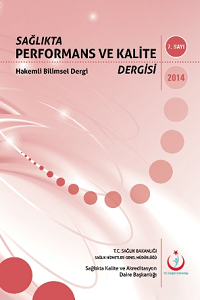Hekimlerin Reçete Yazma Davranışlarının İncelenmesi: Viral Tonsillofarenjit Hastalığına İlişkin Yazılı Hasta Olgusu Örneği
Amaç- Bu çalışmanın amacı, pratisyen hekimlerin, örnek bir yazılı hasta olgusu (viral tonsillofarenjit) için reçeteleme davranışlarını incelemek ve ilaç yazmalarını etkileyen faktörleri belirlemektir.Yöntem- Araştırma Ankara ilinde hizmet veren 117 sağlık ocağında görevli pratisyen hekimler üzerinde yapılmış ve veri toplama aracı olarak anket kullanılmıştır. OcakNisan 2009 tarihleri arasında toplam 576 anket dağıtılmış, ancak 380 anket geri dönmüştür (%66).Bulgular- Bulgulara göre 380 hekimin 334’ü (%87,9) yazılı hasta olgusu için reçete yazarken, 46 hekim (%12,1) hiç ilaç yazmamıştır. Araştırma kapsamındaki hekimlerin 17’si (%4,5) örnek hasta olgusu için antibiyotik reçete etmiştir. Ayrıca yazılı hasta olgusu için yazılan reçetelerdeki en düşük maliyet (reçete başına) 1,3 TL, en yüksek maliyet 66,6 TL olup ortalama maliyet 11,7 TL’dir (±9,8). Sağlık ocağı hekimlerinin günlük baktıkları hasta sayısı ile ilaç yazma olasılığı arasında anlamlı bir ilişkinin olduğu ve sorumlu hekim olmayanlar arasında ilaç yazma olasılığının sorumlu hekimlere göre 3,052 kat daha fazla olduğu tespit edilmiştir. Ayrıca, kurumda çalışan hekim sayısı arttıkça reçete bedelinin de arttığı bulunmuştur. Sonuç ve Öneriler- Çalışma sonuçları hekimlerin reçeteleme davranışını değiştirmek için hangi faktörlere daha fazla ağırlık verilmesi gerektiğine ve ne tür politik ve yönetsel araçların geliştirilmesi gerektiğine ışık tutulmaktadır
Anahtar Kelimeler:
Viral Tonsillofarenjit, Reçete, Reçeteleme Davranışı, Akılcı İlaç Kullanımı, Yazılı Hasta Olgusu
Investigation of Physicians’ Prescription Behavior: A Study on a Simulated Patient with Viral Tonsillopharyngitis
Objective- The objective of this study is to investigate the prescription behavior of physicians for a simulated patient with viral tonsillofarenjit and determine factors affecting their prescription behavior. Method- The study was carried out with general practitioners doctors of 117 health centers in Ankara. A questionnaire was used as data collection method. 576 questionnaires were distributed between January– April 2009, but 380 questionnaires (66%) were returned. Results- The fi ndings of the study showed that 87,9% of 380 physicians prescribed for a simulated patient with viral tonsillofarenjit, but 12,1% did not prescribe any drug. Also, 4.5% of physicians prescribed antibiotic. The lowest prescription cost is 1,3 TL, the highest one is 66,6 TL, average cost is 11,7 TL. It has been found that physicians’ prescribing behavior was affected by the number of patients examined per day and whether physicians have managerial responsibility. Physicians not having managerial responsibility prescribed more 3,052 times than physicians having managerial responsibility. Also, it was found that the more the number of physicians working in the health center increased the more the prescription cost increased. Conclusions- The results of this study are thought to shed light on the issue which factors should be given more weight and what kind of political and administrative strategies must be developed to change physicians’ prescribing behavior
Keywords:
Viral Tonsillofarenjit, Prescription, Prescription Behavior, Rational Drug Use, Simulated Patient Case,
- ISSN: 1309-1972
- Yayın Aralığı: Yılda 3 Sayı
- Başlangıç: 2010
- Yayıncı: Sağlık Bakanlığı
Sayıdaki Diğer Makaleler
Kadir AKSAY, Fatih ORHAN, M. Nurullah KURUTKAN
İrfan Temel İSTANBULLU, Hamza YILDIZ, Hüseyin ZORA
Ümit ÇIRAKLI, Yusuf ÇELİK, Umut BEYLİK
Hemşirelerin Çalışma Ortamlarına İlişkin Algılarının Değerlendirilmesi
Mehtap TAN, Hatice POLAT, Zümrüt Akgün ŞAHİN
Sağlık Hizmet Kalitesinin Ölçümüne İlişkin Bir Araştırma
Mezuniyet Öncesi Tıp Eğitimi Maliyetlerinin Belirlenmesi: Tıp Fakültesinde Bir Uygulama
